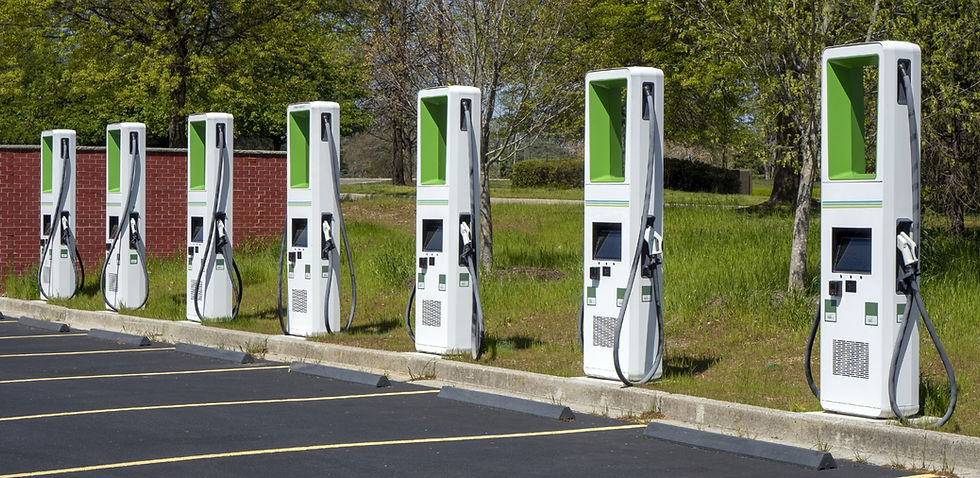EV Newbie Mistakes that are Costing you Time and Money
- Katie Krivolavek

- Mar 23, 2023
- 3 min read
When it comes to making the switch to an EV, there are lots of benefits. But, these common mistakes can cause you to loose efficiency, time, and money!
It’s no secret that buying an electric vehicle is a big decision that can benefit your wallet and the environment over the course of time. However, as a new EV owner, it's easy to make some mistakes that can reduce your enjoyment of the vehicle or its efficiency and range…which means those benefits might not be as great.
Charging too often.
While it's tempting to top off your EV's battery at every opportunity, frequent fast charging can reduce the long-term battery capacity. Only charge as often as needed for your regular driving. Home charging is best for your battery when possible. Limit public fast charging to when you really need it for longer trips.
Charging too much.
Charging your battery to 100% all the time isn’t great on most EV batteries. It can cause battery degradation, which means over time your battery won’t be able to hold as much charge. Especially for daily driving, consider charging your vehicle to around 70% since all you have to do is plug it back in each night to maintain your range! Even on longer road trips, calculate how much range you need to make it to your next planned charge or your destination and only charge to that amount. An added benefit to this is that it takes the longest to charge from around 80-100%, so only charging to what you need can save you time as well.
Not preconditioning the battery.
If you know you have a long drive ahead, preconditioning the battery by charging to 100% ahead of time will maximize your range. However, leaving the EV plugged in at 100% charge for long periods can also reduce battery health as mentioned before. Only precondition when necessary for a trip. A good rule of thumb is to charge to 100% within 2-3 hours of your trip. Otherwise, keep your EV plugged in during normal driving to maintain a 30-80% state of charge.
Not using regenerative braking.
Regenerative braking allows the EV to capture energy normally lost during braking and store it in the battery. Learn how to maximize regenerative braking in your EV to gain some extra range on each drive. The more you practice smooth braking and anticipate stops, the more energy you can recover and extend your range. Some EVs allow you to increase the strength of regenerative braking for maximum energy recovery. It takes some getting used to, but once you have the hang of it most EV drivers much prefer one-pedal driving over using a traditional braking system.
Using the wrong charger.
There are a lot of different chargers out there, so it’s not a bit surprise that new EV owners often pick the wrong charger—at home and while on the road. Be sure to understand how much charge you’ll need to gain and how quickly you want to get that charge. To better understand watch our videos on charging linked in the description.
Not planning for trips.
Once you have the hang of your EV, planning trips will be a breeze. But, when you first get your vehicle you’ll want to make sure you plan ahead on long trips. You’ll want to find chargers along your route, make sure they are the right speed and type for your vehicle. Be sure to check out our video on EV route planning linked in the iCard and description.
If you really want to be a range ranger, here are a few bonus mistakes to avoid to squeak out every last mile out of your EV and maximize the benefits.
Neglecting tire pressure.
Under-inflated tires reduce efficiency and range in an EV just as they do in a gas vehicle. Check your tire pressure regularly and inflate to the recommended PSI for the best performance from your EV. For every 1 PSI drop in pressure, you can lose 0.3% in range. That means if your EV is rated for 300 miles, Some EVs display your tire pressure on the dashboard to make it easy to monitor.
Not using eco-driving techniques.
Aggressive driving, rapid accelerations and heavy braking reduce your EV's efficiency and range. Employ eco-driving techniques like smooth accelerations and decelerations, avoiding excessive speeding and idling to maximize how far you can go on a single charge. Keep a steady speed when possible and avoid excessive braking and stopping. Some EVs offer eco-coaching guides in the dashboard to help you develop efficient driving habits.
What are some mistakes you made as a new EV driver? We’d love to hear your experience in the comments below. Or, if you don’t own an EV yet, what are you worried about with owning an EV?
If you found this post helpful, share it with a friend who might find it useful as well!










留言